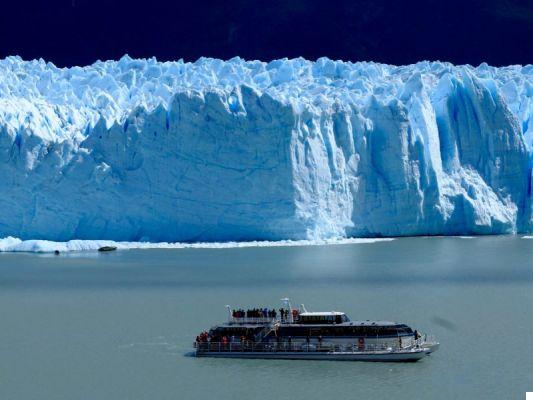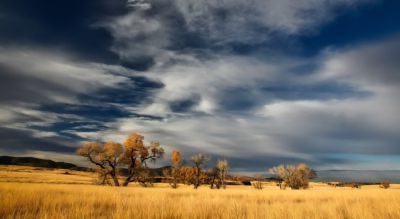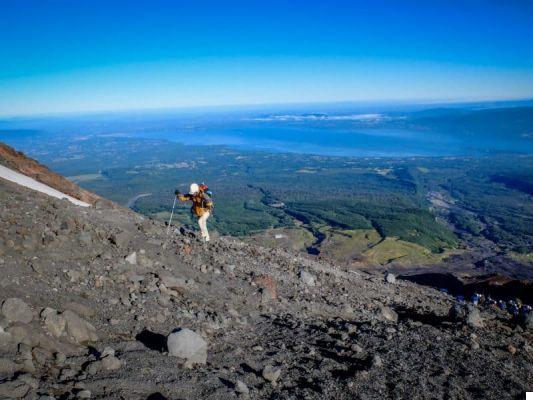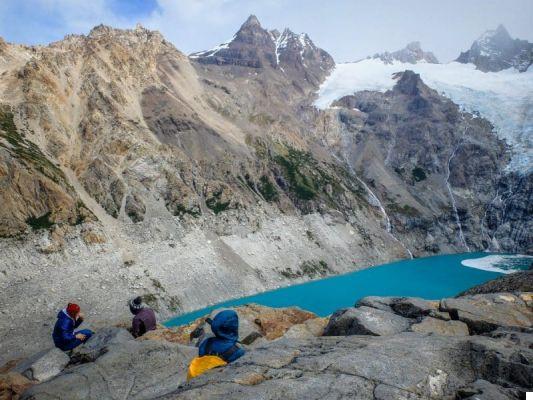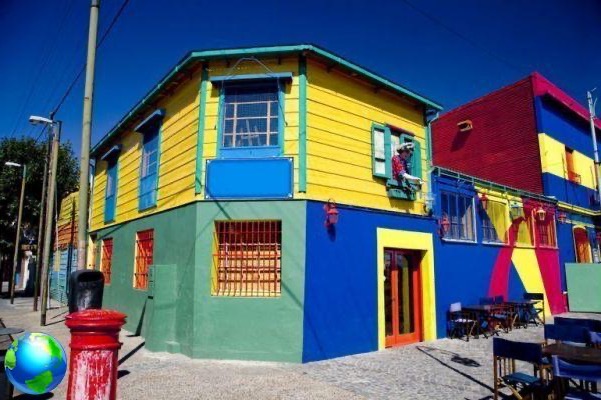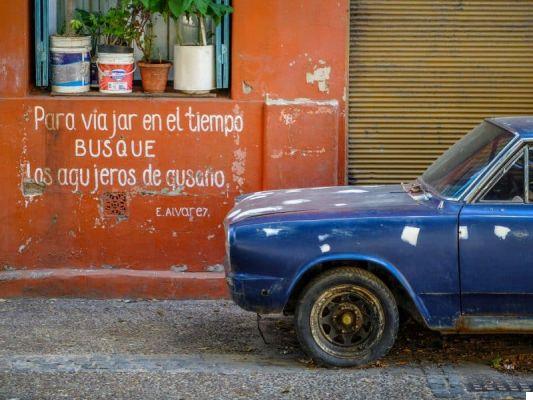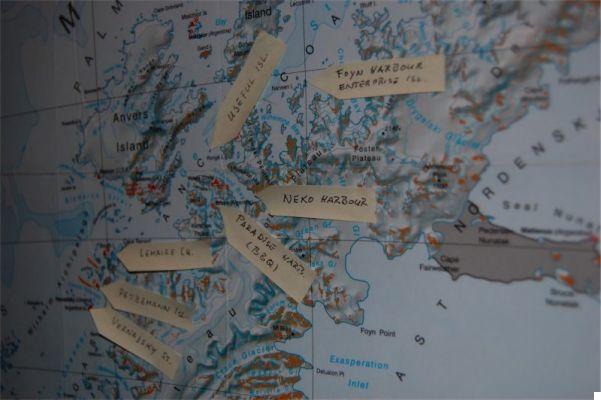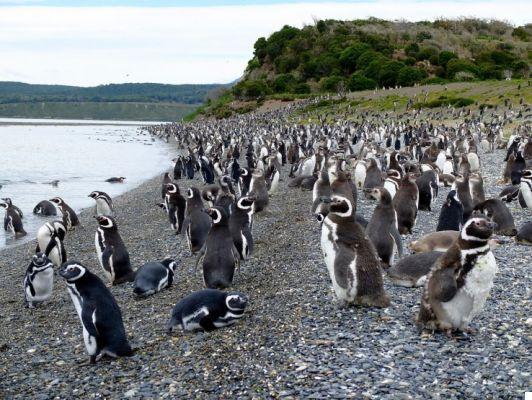
If I have to say it all, Ushuaia it is the place that fascinated me the most during my long trip to Argentina and southern Chile. I entered the Tierra del Fuego by land and I immediately felt that there was a particular magnetism, I cannot explain what it is, but you can clearly perceive that you are entering an almost magical territory. When I arrived in front of the Strait of Magellan my heart started beating fast and the emotion took over. I was really about to cross an epic place that I had studied from school books since I was a child: the mythical strait that separates the mainland from the Big Island in Tierra del Fuego. In reality, Tierra del Fuego is an archipelago made up of hundreds of mostly uninhabited islands and Isla Grande, where Ushuaia is located, is only the largest of these. Two thirds of Tierra del Fuego belongs to Chile and the remainder to Argentina.
I don't know why, but I was expecting a flat territory, but it isn't. As we get closer to Ushuaia the road begins to climb to cross the mountains that make up the Tierra del Fuego National Park. Ushuaia was built on the slopes of the Martial Mountains and is therefore protected by mountains and glaciers. The Argentines call it "World's End" but the primacy of the southernmost city in the world actually belongs to Puerto williams, the Chilean counterpart located 5km further south, on Isla Navarino. Let's say Argentina was much better at marketing. With the advent of tourism, Ushuaia has developed very rapidly and now has more than 70.000 inhabitants. Unfortunately, construction has grown in a disorderly way and everything can be said except that Ushuaia is an architecturally beautiful city. It is a city of great charm, but this is more related to the people and the energy there is.

When to go to Ushuaia
Beyond what you might think, in Ushuaia you can go all year round: even in the middle of winter it does not reach Siberian temperatures. Most tourists visit it though spring / summer (November to March), when temperatures reach 15 ° and hours of light there are so many (calculate that in January the sun sets after 23:30 pm!). In general, the weather always changes very quickly so you will need to bring classic onion clothing. In winter (from June to September) the temperature fluctuates between -15 ° and + 5 °. The biggest problem in visiting it in these months are the strong gusts of wind and the few hours of light, more than snow or cold. On the other hand, if you are a lover of skiing and winter sports, the months of July and August are perfect.
How much
Ushuaia is one of the most expensive places in Argentina. The prices are very high: a bed in a hostel in a dormitory costs around 20-25 euros and a double in the hotel no less than 100-150 euros. Meals cost exactly the same as we do. But the biggest expense, as always, are the excursions. Going to see the penguins on Isla Mirtillo costs, for example, 150 euros. At least in Ushuaia you can pay almost everything with credit cards, unlike in Patagonia, but it is little consolation.

Health Insurance is required
In Argentina our health coverage is not valid. My advice is to always take out medical-luggage insurance that can cover you during the trip. A site that compares the policies of different companies and proposes the most convenient policy for that particular trip. To do this you will have to enter the data relating to your trip (country, duration, etc.) and they will send you an email with the best proposal that you can then buy directly online (being my readers you will also be entitled to a 10% discount!!!).
How to get to Ushuaia and how to get around
Ushuaia is reachable by bus is from other cities of Argentina (such as Rio Gallego or Rio Grande) that from Puerto Natales and Punta Arenas in Chile. In both cases you cross the Strait of Magellan and the border by bus; in addition to the travel time, you will have to calculate about 2 / 3h for these steps. As a rule, both from Rio Gallego and da Punta Arenas we are talking about a journey of at least 12h and there are no night buses. If you have little time you can reach Ushuaia with the plane from Buenos Aires, Rio Gallego, Rio Grande or El Calafate. Flights are very expensive (there are no low cost airlines in Argentina!) And it is better to book them months in advance. The last option to reach Ushuaia (and the most expensive) is the ferry with a cruise from Punta Arenas (only between September and April). The navigation lasts 3-4 days and the base price is 3000 dollars.
Once in Ushuaia you can move on foot (around the city), by local buses or by taxi / remises.
This is the video of the whole trip in Patagonia, Tierra del Fuego and Buenos Aires:
Ushuaia and Tierra del Fuego: what to do and what to see
Walk with the penguins in Isla Mirtillo
This, in my opinion, is the excursion not to be missed; it's quite expensive, but walking with penguins doesn't happen every day, right? It is an excursion of about 7-8 hours and you can book it comfortably from the Denomades website (a super reliable agency and, above all, certified by Sustainable Tourism, which has the same prices as all the others). Normally we leave from the Ushuaia pier around 8 in the morning, from there you take a bus that runs along the scenic Routa 3 until'Harberton Estancia. This estancia, located by the sea in a cove of the Beagle Channel, is the oldest in Tierra del Fuego and is home to the beautiful Acatushun Museum dedicated to the marine mammals of the southern hemisphere. Once here, the group is divided into 2 (only 25 people at a time can get off on Isla Mirtillo and stay with the penguins for 1 hour): one group proceeds by rubber boat to the island of the penguins and the other takes a guided tour of the museum . Getting off on Isla Mirtillo is really exciting, you are surrounded by thousands of Magellanic penguins and Gentoo penguins that every year, between the beginning of November and the end of March, come to nest here. They are very funny and super clumsy animals, you can spend hours watching them. The little ones, covered with gray hair, are truly a sight! And if you are lucky (like myself) you may also happen to see gods Royal piguins. Upon returning to estancia the groups are reversed. After lunch, the trip continues by boat to return to Ushuaia by sea passing by the lighthouse Les Èclaireurs, isla los Pàjaros and isla de los Lobos (see below). In some days the tour is done in reverse: first navigation and then return by bus.
Il canale di Beagle: the Les Èclaireurs lighthouse, the Pàjaros island and the Lobos island
Another classic day trip from Ushuaia (included in the excursion to Isla Mirtillo). The first stop on this boat trip in the Beagle channel (which lasts a few hours) is theLes Èclaireurs island with the lighthouse homonym. Here, in 1930, the German transatlantic Monte Cervantes ran aground, then sunk 24 hours later, and you will hear many stories about this shipwreck during your stay in Ushuaia. Next there are then island of the wolves which houses a large colony of sea lions, los Pàjaros island, populated by hundreds of real cormorants. The view of Ushuaia from here is wonderful!

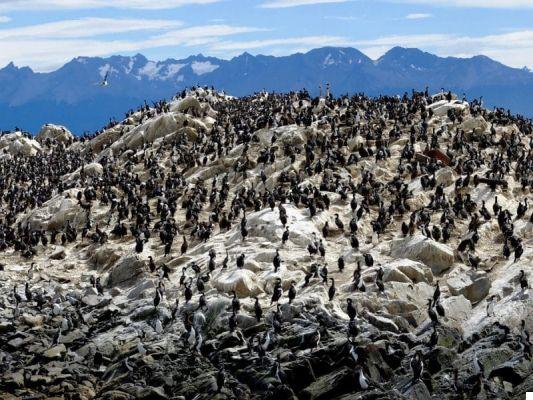
Martial Glacier
This glacier is located just 7 km from the center of Ushuaia. If you are good walkers you can reach the base of the trek on foot, or you can take a taxi and walk only from the base of the chairlift. Allow about 4/5 hours between the round trip. The glacier is nothing special, especially compared to those of Patagonia, but the view of Ushuaia and the bay from above is spectacular.
End of the World Train
The departure station of the Tren del Fin del Mundo is located 8 km outside Ushuaia and allows you to enter the Parque Nacional Tierra del Fuego with a copy of the steam train who transported the inmates to the labor camps and brought back the wood. The train has 3 departures a day and the scenic journey takes 1 hour on a narrow gauge track. The cost is 40 euros return (definitely excessive for the experience itself).
Tierra del Fuego National Park
This national park is the only one in Argentina to have a sea coast. It is a very large and quiet park, where it is possible to make many excursions between lagoons, peaks and panoramic paths. The entrance is located 12 km outside Ushuaia along the Routa 3 and can be reached by bus from the city center (the return ticket costs about 17 euros). One of the most famous excursions is theascesa to Cerro Guanaco (about 7h round trip) which allows you to climb up to 980 meters and enjoy a beautiful view over the bay of Ushuaia. Other trails not to be missed are those at Mirador Lapataia, Black Lagoon Trail and Send Castorera along which you can see the dams built by beavers. Inarritu shot the last scenes of the film here “The Revenant” with Leonardo Di Caprio. Entrance to the National Park costs 13 euros per person. If you don't feel like going there alone you can book a tour like this one for example.

End of the World Museum
This small museum is located on Ushuaia's waterfront, in a building that was once home to the city's only bank. It is small but interesting and tells the story of the city, the local birdlife and the life of the indigenous peoples. With the same ticket you can also visit the Government House which instead tells, through photos and various finds, the story of the famous sinking of the ocean liner Cervantes in 1930.
Merenda o scene from Ramos Generales
I fell so in love with Ramos Generales that I went back for dinner three nights in a row. An old food warehouse has been transformed into a magnificent bar-restaurant filled with memorabilia where time seems to have stood still. They bake bread and desserts every day and offer very good dishes: above all, take one of their soups with seasonal vegetables (5 euros). Try to talk to Enrique and ask him to visit the old apartment of the owners (the Salomon family) which is next door, you will be amazed! You can listen to Enrique for hours, he will tell you the story of his grandfather (who was on the Cervantes when he was shipwrecked), of Di Caprio and Inarritu who were in Ushuaia for more than a month filming The Revenant, of Al Pacino who arrived there with his yacht and many other stories that will keep you glued there for a whole evening. A character with an impressive charisma.

Gita a Puerto Williams
If you want to experience the thrill of arriving in the real southernmost city in the world, you can take a trip to Puerto Williams on the Isla Navarino, in Chile. Puerto Williams has remained much more authentic than Ushuaia, it is inhabited by 20000 people and you will feel like you are reliving the life that was done here in the early twentieth century. Another great reason to come here is the Circuit of the Dientes de Navarino, a 54 km long trekking route that is becoming more and more popular. Puerto Williams can be reached by ferry from Ushuaia but there are no trips every day so you'll have to plan to stay overnight at least one night.
Cruise to Antarctica
I refer you to the article: Antarctica, the mythical south pole.

Where sleeping in Ushuaia
Hostel Yakush. This hostel is located right on the main drag of Ushuaia and is very nice. From the outside it is an anonymous building in colored sheet metal, but inside the rooms are very comfortable. There are both dorms and double rooms, with or without private bathroom. The staff are friendly and can organize and book any type of tour. A bed in a 8-bed dormitory costs around 20 euros with breakfast included.
Where to eat in Ushuaia
- Rist Ramos Generales. As also written in the paragraph above, this is a bar-restaurant-museum that is worth seeing even without eating. What's more, the cuisine is also good! They have great soups, home made pasta, meat, salads and home made desserts.
- Maria Lola stayed. This bay view restaurant is located a few meters from Hostel Yakush, a side street away. The room is glazed and offers a beautiful view of the bay, especially at sunset, when everything is tinged with pink. Fish menu but not only and good value for money.





